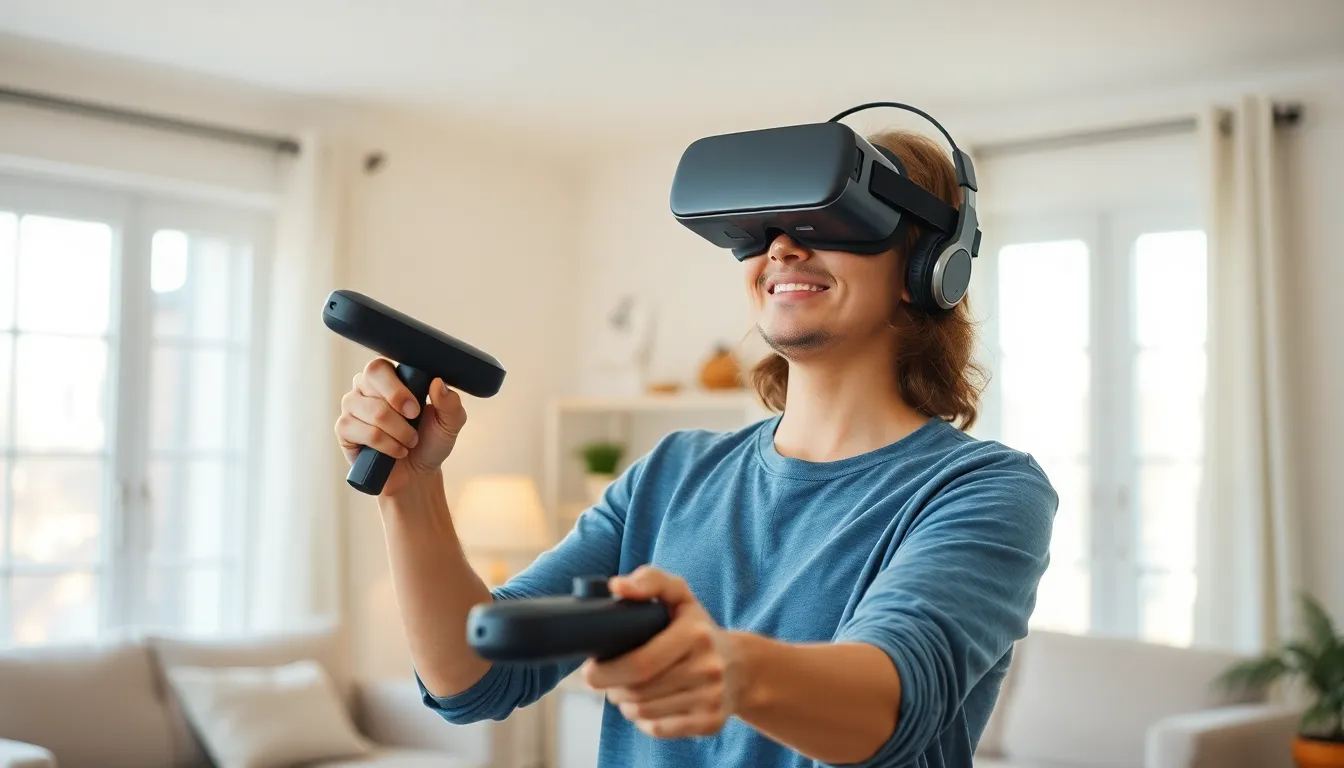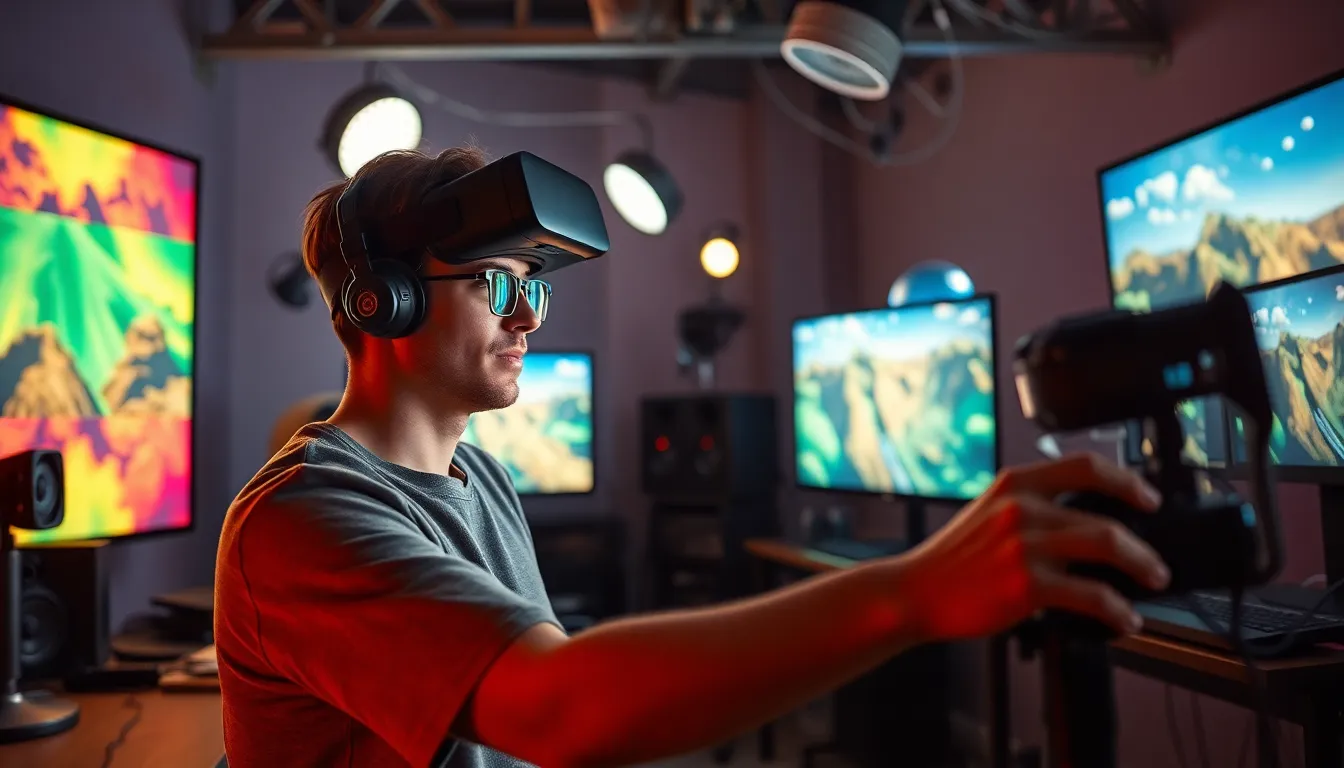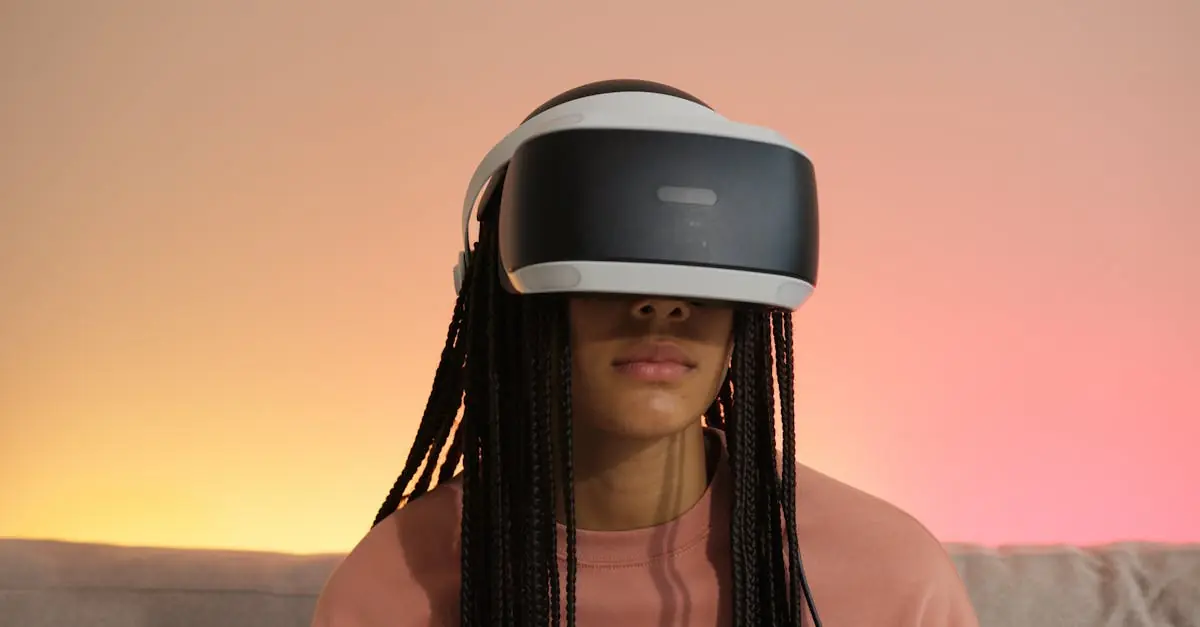Virtual reality has taken the gaming world by storm, but one question lingers: should players stand or sit while diving into these immersive experiences? It’s like debating whether to eat pizza with a fork or just go full-on face-first. Each option has its perks, and choosing the right one can make all the difference between feeling like a champion or just a couch potato in a headset.
Standing VR offers the thrill of movement, allowing players to dodge, duck, and weave like they’re in an action movie. On the flip side, seated VR can be a cozy escape, perfect for those who prefer to keep their snacks close at hand. So, which side will you choose in this epic showdown of VR standing versus seated? Let’s explore the pros and cons to help you find your perfect VR groove.
Table of Contents
ToggleOverview of VR Experiences
Virtual reality (VR) experiences can vary significantly depending on whether the user is standing or seated. Standing VR immerses users in their environments, allowing for greater interaction with virtual objects. Movement translates into an enhanced sense of presence, making activities like gaming or exploration feel more lifelike.
Seated VR, on the other hand, offers a comfortable and stable environment. Users can engage in experiences without the physical demands that standing entails. This setup suits those who prefer a more relaxed approach, such as watching movies or engaging in story-driven experiences.
Consider the type of VR content available. Many active games benefit from a standing format. Users interact with their surroundings by moving around, dodging obstacles, or performing physical tasks. Examples include fitness games, multiplayer shooters, and escape rooms.
Seated experiences cater to different genres. Many cinematic VR applications or puzzle games work well in a seated position. Users can focus on narrative elements or complex problem-solving without the distraction of physical exertion.
Sociability varies between both options. Standing VR often involves shared spaces, where users can play together or compete. Social interactions become more dynamic, fostering a competitive environment.
Conversely, seated experiences can be more intimate. Users might engage with content individually or share their experience with a small group. This format allows for storytelling and collaboration in a more controlled setting.
Understanding preferences helps users choose the right VR style. Individual comfort levels, physical space, and desired interaction types all influence the decision between standing and seated VR experiences.
Benefits of VR Standing

Standing during virtual reality experiences offers numerous advantages that enhance gameplay and engagement. Increased mobility and interaction characterize the standing VR experience.
Improved Mobility and Interaction
Standing allows users to move freely, navigating virtual environments with ease. This mobility facilitates a more natural interaction with virtual objects and characters. Users often find themselves more engaged when they can shift their weight, walk around, or even jump. Fitness-focused games, such as those involving rhythm or combat, benefit greatly from standing gameplay. Players experience direct physical engagement, which contributes to better reflexes and coordination. Enhanced social interactions emerge in multiplayer settings, where standing creates a more dynamic atmosphere for players.
Enhanced Immersion
Standing in VR significantly elevates the sense of immersion. Participants often feel as though they truly inhabit the virtual space. This connection boosts overall enjoyment and user satisfaction. When standing, individuals can physically react to their surroundings, fostering a deeper emotional response to the virtual experience. Players benefit from enhanced spatial awareness, allowing them to explore environments in a more meaningful way. Immersive experiences, such as exploration games or simulations, thrive under these conditions, delivering a richer storytelling experience.
Advantages of VR Seated
Seated virtual reality experiences offer distinct benefits, focusing on user comfort and making VR accessible.
Comfort and Convenience
Users enjoy a comfortable setup when using seated VR. It allows for extended play sessions without fatigue. Seated experiences cater to those who prefer a relaxed environment, making them suitable for casual gaming and cinematic adventures. Additionally, individuals can use their own furniture, enhancing the sense of normalcy in the virtual environment. Manufacturers designed many seated VR systems to enable easy adjustments, ensuring optimal positioning for every user.
Accessibility for All Users
Seated VR accommodates a wider range of users, including those with mobility challenges. Many individuals find comfort in gaming while seated, enabling participation regardless of physical limitations. This accessibility encourages inclusivity in virtual environments, where everyone can enjoy various experiences. Content creators tailor games to optimize seated play, ensuring engaging interactions that do not rely on physical movement. With accessibility as a focus, seated VR experiences cater effectively to diverse user needs, enhancing overall enjoyment.
Comparisons Between VR Standing and Seated
Exploring the differences between standing and seated VR enhances the understanding of user experiences. Both options offer unique advantages, influencing choice based on engagement and physical requirements.
User Engagement Levels
Standing VR promotes high levels of user engagement. Users can move freely, creating interactive experiences that elevate excitement and presence. Players often feel a deeper connection to the virtual world, particularly in active games that require full-body movement. Seated VR, however, caters to a different style of engagement. Comfort leads to longer sessions, appealing to fans of storytelling or puzzle games. Seated setups allow for increased focus, making it easier to immerse oneself in narratives. Both formats offer unique interactions, allowing users to choose according to their preferred level of activity.
Physical Space Considerations
Physical space plays a critical role in choosing between VR options. Standing VR demands ample space, ensuring users navigate without obstructions. Adequate room facilitates natural movements and enhances safety during gameplay. Conversely, seated VR requires minimal space, allowing users to enjoy experiences within confined areas. This adaptability makes seated VR ideal for smaller living rooms or shared environments. Users can comfortably utilize their furniture, blending virtual and real-world elements. Each format’s requirements influence decisions, emphasizing individual circumstances and preferences.
Choosing between standing and seated VR experiences ultimately depends on individual preferences and gaming styles. Standing VR offers an immersive and active environment that enhances engagement and social interaction. It’s perfect for those who thrive on movement and excitement.
On the other hand, seated VR provides comfort and accessibility, ideal for users who prefer a relaxed atmosphere for storytelling or cinematic experiences. Both formats have their unique advantages, catering to different types of gamers.
Understanding personal needs and the physical space available can significantly influence the VR experience. Whether it’s the thrill of standing or the comfort of sitting, each option has something valuable to offer in the ever-evolving world of virtual reality.



